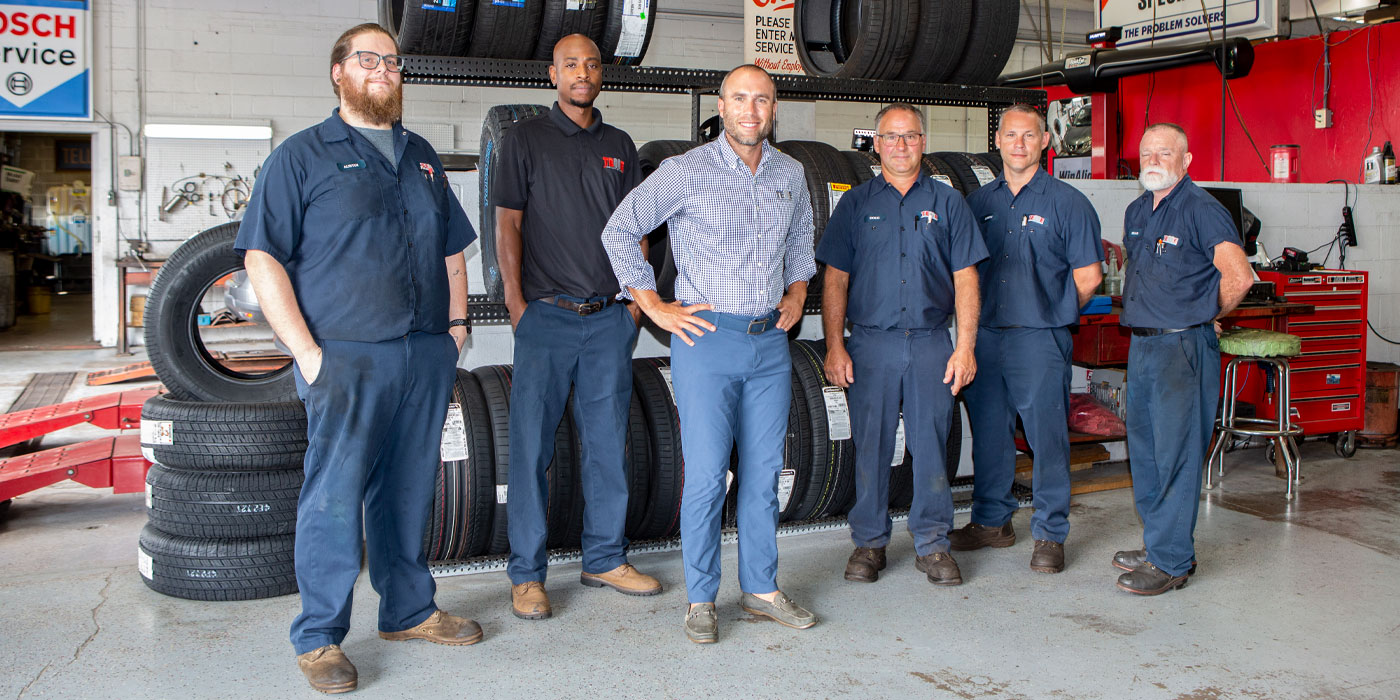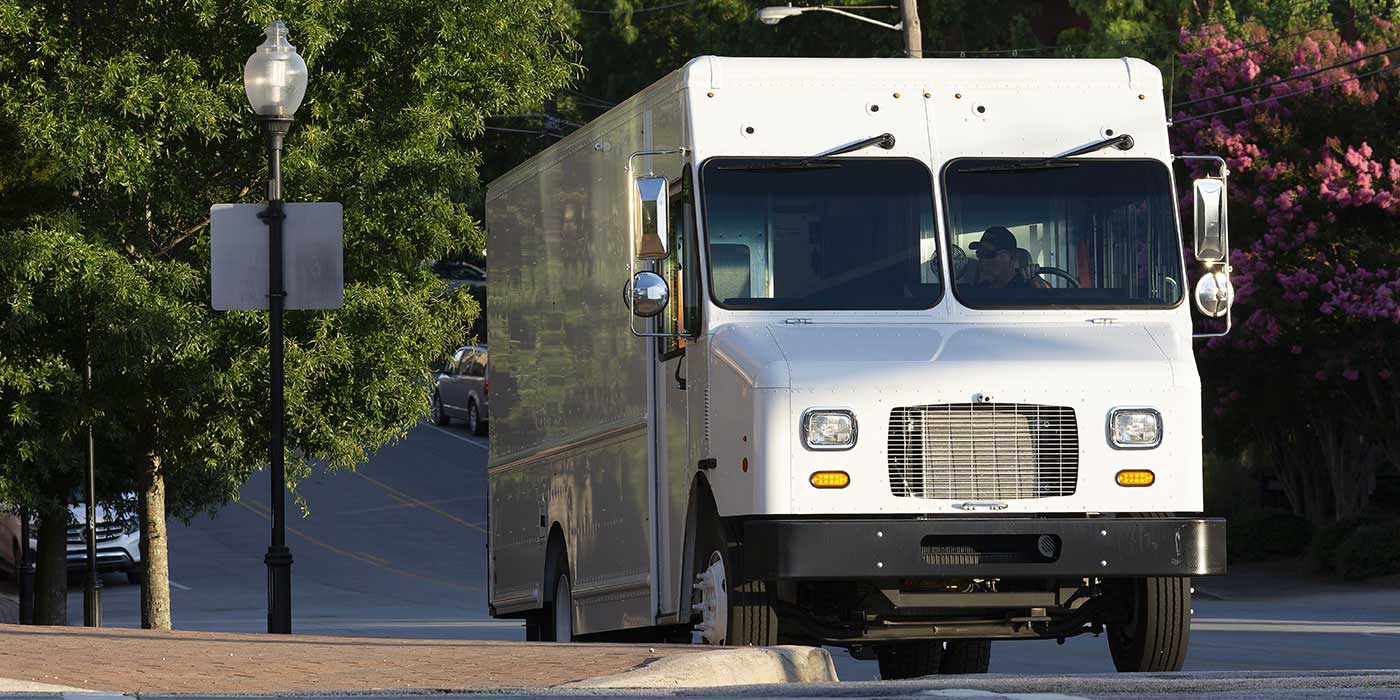This past June I asked readers to offer their take on two questions.
The first question had to do with whether you’d repair a puncture on a HP or UHP tire: “Assuming the injury was within repairable limits, would you: A) repair the tire (using all proper, professional methods and materials), knowing you’d be on the liability hook if anything happened to the tire in the future, or B) turn the customer away, not wanting to take the risk and knowing that’d be the last time you saw that customer?
The second question was a bit more direct: “Do we need legislation/regulation – national or state-by-state – to educate and enforce proper and complete tire repairs by tire service outlets – including tire dealers, company-owned stores, mass merchants and chain stores, car dealers, or independent repair shops?”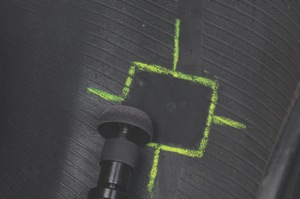
(At the time I wrote that column, RMA-written tire repair legislation had not yet been considered by the New York State Legislature, TIA had not countered with its anti-bad repair version, the legislature hadn’t set the bills off and adjourned, and TIA and the RMA hadn’t started “working together” on a supposedly better legislative approach.)
The idea with my June column was to create “some legitimate dialogue” on tire repair “that, perhaps, can help shape our future.”
Besides seeking input from readers, I sent personal invitations to more than 100 people and companies from all corners of the industry, specifically asking their opinions.
Below are the responses we received, edited slightly for space. I truly want to thank those who actually took the time to participate. Hopefully their viewpoints will indeed help shape our industry’s future. Wish I had more comments to share, but you know how that goes.
Larry Griffin Jr., of tire dealer Griffin Brothers Companies, wrote:
“We would do the repair and do it correctly. I don’t know of any dealers in my area that would not do the repair. In my opinion we would lose customers by not doing the repair, no matter how much you explain the manufacturer’s policy.
“I think we need national legislation/regulations, not by state. This would put all of us on an even playing field, and consistency is good. Too many customers still come in and ask if we can ‘plug their tire.’ We haven’t plugged tires in 20 years, but many dealers still do. I am for less government, but in some cases there needs to be consistent rules so the dealers who are doing it right are not penalized.”
From award-winning Charleston, S.C., dealer David Hay comes:
“I raised this question at a Tire Pros regional council meeting in early May. I had just received the online version of Bridgestone’s Tire Maintenance, Safety and Warranty manual. I actually took the time to print it and read it. Does it make you wonder about the level of importance manufacturers attach to this manual when they just send an email with an attachment?
“Anyway, on page 16 it states that a tire’s speed rating is void if the tire is repaired. This actually follows a brief description on how to properly repair a tire. Curious…
“It also states that any tire that had ‘Fix-a-Flat’ installed must be immediately replaced. Not sure when this began, but I don’t ever remember seeing that before. What does that indicate about vehicles without spares and how does a driver safely get to a service center?
“My info says more vehicles are coming without spares. How willing will consumers be to purchase a car that may leave them stranded? No spare, use an aerosol sealant and void the warranty.
“So, after reading the manual, I thought that my peers at a Tire Pros meeting should be aware and have a discussion. Not trying to expose a manufacturer, but I want to make sure that the industry was informed and consistent in how we take care of our customers and protect ourselves against any liabilities.
“I worry that tire dealers aren’t aware of these standards and need to be educated. If some manufacturers’ (Michelin) tires can be repaired up to three times, why can’t others? Or does that open a whole new area of quality discussions/differences?
“Where are vehicle manufacturers on this issue? What do car dealer service departments do? What do Bridgestone and Goodyear company stores do? What about price clubs (Costco) that include free tire protection on tires that they sell? Wouldn’t that mean they should immediately replace any tire that is presented with a puncture?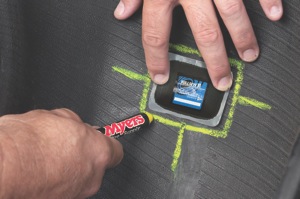
“Assuming a punctured tire passes all inspection issues, we currently repair them as we have for years. Speed rating or not. That means that we have repaired many thousands of tires over the years and they provided a full life’s use for the customer.
“My point is to raise awareness and provide a safe policy for consumers. I believe that we do need a regulation/legislation so that all people will have the same level of safety and reliability when driving on repaired tires. I believe this issue is important enough to warrant an open, national discussion that would create standards with which we could all live.
“The bottom line is this: If a speed-rated tire is punctured, the manufacturer states that if repaired, the speed rating is void. ‘It is the top speed of the slowest tire on the vehicle which limits the vehicle’s top speed without tire failure,’ from page 18 of the Bridgestone manual, then tire and vehicle manufacturers must agree and state that any punctured speed-rated tire must be replaced.
“That’s how I read it, but I’ve never heard that and I really want to know what that really means.”
John Garrett, technical director for Rema Tip Top/North America, wrote:
“We at Rema Tip Top/North America have always been very much involved with the training of tire technicians and the ‘correct’ method of tire repair according to industry standards. We produced one of the first nail hole repair wall charts in 1992, and in January 1994 we launched our first Mobile Training Unit (a second was added in 1998), taking tire repair training and education to the end user’s door, as opposed to them sending their technicians off-site to receive training.
“The interest level in tire repair training is normally very low on the priority list of a tire dealer. I have said for years that tires are the most neglected components on a vehicle, which brings up a question I frequently ask in training: When is the last time you inspected or checked the air pressure in your tires? Most of the time, I get this dumb look from the group or a technician.
“As you mentioned, we live in a sue-happy society. However, not everyone cares about the safety and well-being of themselves or their customers. If they did, the industry would conform to safe and proper tire repair procedures as suggested by the tire manufacturers and tire repair manufacturers.
“You asked if I’d repair the speed-rated tire using the correct repair material and to industry recommendations: Yes, I would. When repairing a high performance tire, our recommendation is always to contact the tire manufacturer to get their specific repair recommendations and limitations of repair. This information is available on the Internet and also often located in the glove box of the vehicle.
“We don’t need government involvement or regulations telling us what to do or not do; the government is too big now! Think of the tax money needed for the task of policing tire dealers.
“We in the tire repair industry have been training technicians for years, and Rema Tip Top will continue to do so in the future. When we repair a tire correctly, it is a safe and permanent repair, plus it is recycling – green. Think of what the used tire population problem would be without repairs.
“One last point: Will the new tire companies conform to any legislated tire repair policy? Will they do a better job of informing what limitations they impose to the repair of their tires, speed-rated or not, or will we still need to contact them directly for their individual policies?
“The point here is if they want legislation so bad, what are they willing to do to adequately inform the public and service facilities as to what they will allow? That information is broken, too, so the fact that legislation might exist doesn’t do much if the access to what is allowed is no better than the training methods that have been in existence for many years. They change the rules but do a poor job of informing the aftermarket of their criteria.”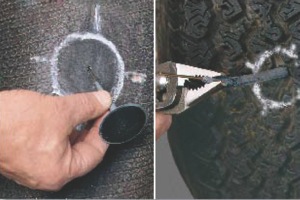
From the private brand perspective comes Pat McLaughlin of Sure Tire Co.:
“First, I would not turn a customer away. Where there was a need to sell a new tire we would present this option first and in some cases there would be no flexibility. No tires would be repaired if a sealant was injected; if it had any indication of being run soft (bluing or chaffing in the sidewall); or if it was a run-flat tire. So there would be specific guidelines and there would be no deviations.
“However, should a tire repair make sense from a safety standpoint, we would have specific employees trained in proper two-stage repair procedures and only in the flat portion of the tread area.
“Additionally, a specific agreement would be prepared by an attorney stating: ‘The speed rating of the tire has been compromised and it is now rated to a maximum of S-speed rating of 112 mph.’ No signature, then the repair service would not be performed.
“The reason for this action would be to provide a service to consumers who may not have financial resources to purchase a new tire/tires and proper repair procedures have proven to be safe and reliable.
“Here is a concern not mentioned in your article: What liability does a tire dealer have by replacing only one tire on the vehicle where tires are worn 50% or more or have a differing brand and design? Where does the liability fall? There is a perfect solution, but very few customers will purchase a minimum two tires each time they have a flat tire.
“On your second question, I am really torn on this question. I have a disdain for government involvement in commerce in any degree. However, there is a safety issue and unfortunately the tire industry can’t seem to police itself and properly train its employees in proper repair procedures.
“Here is why: Recently I dropped a HP tire off for repair. When I returned it had been plugged using the old rope plug; the tire had not been broken down and inspected and it was then mounted on the vehicle. The following day, I replaced the tire; as I had it broken down I saw it did have chaffing on the inner sidewall.
“Should NHTSA provide specific guidelines for tire repair? Perhaps so. First, the guidelines will protect the dealer and his employees. Setting specific guidelines provides the ability for the tire dealer to clearly state when a tire can be repaired and when a new tire or tires are necessary. The government can’t make a person purchase a new anything, but that may change with the healthcare bill before the Supreme Court.
“Training should be required and technicians certified as is done with mechanics. This should be the responsibility of each state.
“Having stated all this, it is still the responsibility of the store owner to educate his employees. It is a shame we can’t seem to police our industry and not have these issues raise their dirty little heads.”
Ft. Myers, Fla., dealer Pam Oakes offered this:
“Yes, we do turn customers away if they request a patch for their HP/UHP tire. Tires have mechanical limits. There is a specific reason that the manufacturer does not want automotive centers to patch (and, God forbid, plug. That’s another topic) a HP/UHP tire.
“My job as a technician is not to second guess the engineer who designed the tire, but to service the customer properly. And, repairing a HP/UHP tire is not providing proper service to the customer. Yes, I am sure that many customers I turned away had shopped around until they found an unscrupulous facility that would repair a HP/UHP tire. You will always have that percentage of people who are not looking for the correct solution, but the solution that suits them the best.
“Legislation would help support our position on not repairing HP/UHP tires, but you will still have those shops that think that they are above the law. To help combat that situation, the legislation should have teeth that allow heavy monetary penalties along with each infraction. It’s a win-win for everyone involved.”
Jason Hoffman, owner of Utz Tire Service of Arcade, N.Y., wrote:
“Following the recommendations of the RMA and following their procedures, I would advise the customer first of the repair process and the possibilities of speed rating reductions. This is noted on the customer’s invoice. If the tire manufacturer voids all warranties, that is explained, as well. We then proceed from there.
“Secondly, I wish there was legislation to regulate the tire industry for such things as correct new tire placements – new tires on rear, snow tire applications, etc. There are too many gray areas in our industry, too many fly-by-night backyard shops that just do anything and are not concerned about their customers’ safety and others on the road.”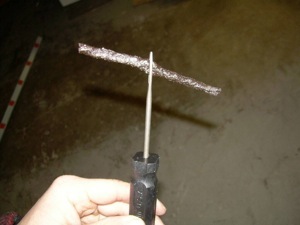
Bob Harvey, national service trainer for ATD’s Tire Pros program, offered:
“On the first question, this is truly a concern for the tire industry as a whole, as well as the motoring public. It’s hard to imagine a tire dealer turning down a customer to properly repair a tire – provided the injury was within industry limits. To decline repairing tires would create issues for the tire dealer’s customer base and create confusion with them.
“On the second question, the legislation issue is far too complicated to try and navigate and provide a definitive answer to in this forum. ATD can only tell you how we are approaching educational seminars and making a concerted effort to inform our Tire Pros dealers as to industry best practices.
“At Tire Pros we have taken a proactive approach. Teaming with the vendor partners of ATD’s tool and supply division and focusing on current RMA methodology, ATD provided over 200 Tire Pros dealers training via this hands-on approach last year. We also just held a webcast on May 30 that all dealers were able to view either live or recorded.
“Our dealers want to perform repairs properly, by industry standards and with customer safety in mind. We have been encouraging our dealers to sign up for the TIA ATS instructors training currently touring the country, which ATD is helping sponsor. This way our dealers have a trained instructor in-house ready to train the new technicians with the current approved training methods.
“If all tire repairs were performed the correct way, then the likelihood of catastrophic failures would diminish and the need for regulation would likely diminish, as well.”
From Oroville, Wash., Brian Thompson of Thompson Bees, writes:
“We fix them. There is liability in everything we do. Rather than questioning if HP tires should be repaired – and by questioning it, giving ammunition to the bloodsuckers – you should be looking into airtight legal forms that we could have the customer sign stating that they understand the risks and the lowered speed rating.
“I kind of get a kick out of people who come into my shop looking for a certain speed rating. Most of them want a ‘Z’ because that must be the best tire, right? Then I ask them how fast they drive. Do they ever exceed 100 mph? They almost all look at me like I’m crazy and tell me they never have and never would drive that fast.
“We do not need regulation to enforce proper tire repairs. Tires are going to fail. Repaired tires are also going to fail. Absolutely perfectly repaired tires are going to fail. Legislation and regulation will give consumers the unrealistic expectation of no failures, and it will leave the ball in our court to prove the repair was not the problem.
“I have enough trouble proving to customers that the shredded tire they bring in hit something in the road and then ran flat until it turned into rubber powder. They believe it just ‘exploded’ like that. How could we ever prove that a shredded tire had a proper repair, no steel cord showing, glue properly dried, or even that the repair that did fail was not ours?
“If I were a tire manufacturer, the safest thing to do would be to say my tires could not be repaired. Nobody asks about repairability before buying. You should see the look on people’s faces when you tell them their run-flat tires can’t be repaired. The manufacturers could sell more tires and have no liability.
“We need something the customer would sign on the work order relieving us of liability. Obviously, sometimes the lawyers would be able to prove negligence on our part, but if everybody required the customers to take that liability, it would tend to put the burden of proof on them. If only an individual shop requires customers to sign something, it appears that they don’t know what they are doing or are admitting to poor repairs. If the RMA came out with as bulletproof a document as could be written and most of us used it, then it would be seen as the norm.
“What will be the end of this if we carry it to its logical conclusion? Many more people will die because instead of taking their tire to be repaired, they will just ‘watch it’ and keep airing it up. I see this all the time.
“People just don’t want to take the time or pay the money for a repair so they just keep adding air. And running the tire low. Making it harder and more expensive to get tire repairs will exacerbate this problem.”
Tire Rack director of tire information services John Rastetter stated:
“Unfortunately for tire service providers, tire repair has evolved from a customer service to a legal liability. And in today’s world of long-lasting radial tires, it’s possible a tire repair may have to survive 72 million tire revolutions during six years of service (for a 15,000-mile-per-year driver).
“The universal use of speed-rated OE tires for U.S. cars and light truck vehicles for over the last half-dozen years means this isn’t a question relevant to just high performance vehicles and tires anymore. It’s a question relevant for all passenger and light truck vehicle tires. Yesterday’s speed-rated performance tires on Ferraris and Porsches have been joined by today’s speed-rated tires on Ford Taurus, Honda Accord and Toyota Camry family sedans.
“Tire Rack will repair punctured tires following industry guidelines, but it starts with a conversation with the driver to try to determine the duration and severity of pressure loss. Since we are close to an exit on the Indiana Toll Road, we are also a source of service. But with 70 mph-plus Toll Road travel, sometimes you just have to say ‘No’ to tires exhibiting any signs of having previously been run low or flat.
“People heal, but tires don’t. Tires overstressed by having been run low or flat will never again have the same strength. And even the best tire technician doesn’t have Superman’s X-ray vision to determine the integrity of rubber’s bond to the tire’s internal structure of reinforcing steel and fabric.
“We don’t think government legislation/regulation should be required, however we are dismayed when we examine tires that confirm someone is using repair practices that don’t meet industry guidelines or common sense practices. We also question how $500 penalties can be any more of a deterrent than the multi-million dollar judgments lawyers are winning for plaintiffs who have lost loved ones due to a repair shop contributing to a tire failure by trying to save time or cost, rather than saving lives.
“Driving a vehicle on an improperly repaired tire is dangerous to the driver, passengers and the occupants of other vehicles around it. Improper repair can further damage the tire and/or allow its strength to deteriorate over time. An improperly repaired tire driven at high speeds may suddenly fail, resulting in the loss of control – and the customers that are in the vehicle.
“Additionally, the tire industry needs a one-stop-source for tire service providers to access information on tire manufacturer policies regarding tire repair. In addition to the RMA procedures, things like the repair of run-flat tires, proximity of repair locations and retention, reduction or voiding of speed ratings are details that RMA refers to the manufacturer first, followed by the industry guidelines. Unfortunately, this information now lives in a wide variety of locations on tire manufacturer websites and TSBs, or in vehicle manufacturers’ owner manuals.
“Proper puncture repair should remain a customer service, even if a customers’ cost has to be raised to match the real time and materials necessary to do the repair correctly. A shop that says it can repair a tire in 10 minutes for under $10 without removing it from the wheel isn’t following industry procedures. A correctly done flat repair that follows the multi-step dismount, inspect, repair procedures will take approximately 30 minutes and should cost around $25.”
From TIA senior vice president of training Kevin Rohlwing comes:
“Tire repair is a significant component of our training and certification programs, so we have played an important role in educating the industry over the past 15 years. We agree with many of your concerns and would like you to know that TIA is moving forward with plans to solve at least some of the problems related to the state of tire repair in the industry.
“In a country where the maximum allowable highway vehicle speed can never legally approach the limitations of the tire, logic would dictate that the speed rating should be inconsequential when replacing or repairing tires. Most consumers in North America cannot understand it because they will never drive that fast. The industry tries to explain the role that speed-rated tires play in the handling of a vehicle so it reflects more of a performance rating, but consumers still see it as just another way for retailers to sell a tire or a set of more expensive tires.
“In a perfect world, drivers would understand the need to maintain the speed rating of the tires on their vehicles at all times. But in the real world, most of them are concerned about price, so they are more than willing to drive on tires that are no longer speed rated following a repair, if it will save them money.
“Unfortunately, retailers are considered experts in a court of law, so what should be considered circumstantial evidence during an accident investigation ultimately opens the door to litigation. There are no laws that say a tire must maintain the speed rating after repair or replacement. It’s a good idea and a best practice, but not a law. There are lawyers looking to take advantage of retailers who knowingly or unknowingly fail to follow the industry guidelines or tire company policies.
“While we are unaware of any data that illustrates the risks associated with speed-rated tires following proper puncture repairs, each tire company has its own policy regarding the repair of speed-rated tires, so we advise our members to consult the tire manufacturer.
“Many retailers choose to disregard the tire manufacturer guidelines when it comes to the repair of speed-rated tires because they believe a proper repair in the crown area does not reduce the performance or create a safety risk. But they must accept the liability that accompanies such a stance because the name on the sidewall ultimately dictates the repair and warranty policies that were either followed or not followed.
“TIA was opposed to the language in the proposed New York legislation because it did not focus on the problem. Regulating the majority of retailers who properly repair tires on a daily basis will have little impact on the safety of the motoring public. Improperly repaired tires pose a risk to motorist safety, so TIA submitted amendments to the New York bill that would put the emphasis on making improper repairs illegal if the legislature felt that such a regulation was necessary.
“As it turned out, the New York tire repair bill never made it to a vote so it is basically dead. But TIA recognizes the resolve of the tire companies to pass tire repair legislation in other states, so we are in discussions with the RMA to find common ground and work toward solving the problem.
“TIA’s position of ‘educate not legislate’ has not changed. We will always prefer to take the approach of educating simply because our industry is already forced to comply with a wide range of government regulations.
“But we also realize that while the ‘educate not legislate’ theory has worked well in the past, the issue of tire repair has a direct impact on the safety of the motoring public, so it may need to be handled differently. TIA is at a crossroads when it comes to tire repair legislation. We can either continue to fight it on a state-by-state basis, or we can take a different approach that reflects the amendments we submitted in New York. Whichever path we choose, the reasoning will be based on what’s best for the safety of the motoring public and the image of the tire industry.”
Finally, from Dan Zielinski, the RMA’s senior vice president of public affairs:
“Not all tires can be repaired. In addition to the RMA puncture repair procedures, there may be additional limitations based on individual tire manufacturer repair policies. These may include the type of service such as speed rating, load index, run-flat technology and commercial application.
“For speed-rated tires, the manufacturer must be contacted for its individual repair policy and whether the speed rating is retained after the repair.
“The RMA supports legislation to stop automotive service providers from improperly repairing tires and to instead follow long-established procedures for proper tire repair.
“Safety is the highest priority for tire manufacturers. Tires are a critical motor vehicle safety component and have performed superbly for decades. RMA members are constantly conducting research and development into new technology to further enhance product performance. Tires provide optimum performance when properly used and maintained. Consumers should continue to have great confidence in these highly engineered products.
“Improper tire repairs pose a safety risk to motorists because they can weaken the structure of these highly engineered products and increase the chance of inflation pressure loss. Repairs outside the repairable area of a tire; repairs performed without removing a tire from the wheel assembly so that possible damage to the tire interior can be inspected and judged appropriately; and other repairs that fail to conform to industry guidelines increase the risk of tire failure. Improperly repaired tires can fail while in service, such as by tread-belt separation, which may result in a vehicle crash and cause serious personal injury or death.
“RMA has provided proper tire repair procedures and offered educational materials to the industry for decades. Careful deliberation and consideration have produced a comprehensive guide to tire dealers and automotive repair outlets for proper tire repairs. Despite years of education and effort, too many improper tire repairs are still performed that put motorists at greater risk of tire failure.
“The vast majority of tire retail outlets perform proper repairs and should be unaffected by any legislation. Lives can be saved by compelling automotive repair facilities to perform tire repairs to RMA procedures. Additionally, many tire retailers often face discussions with customers over why a proper repair must take longer and cost more than a quick and cheap plug-only repair. This also could be alleviated by a law that prohibits unsafe repairs.
“While a national regulatory solution for tire repair might be a more desirable approach as it would affect all 50 states, it would face significant hurdles. NHTSA has authority over new tires, but once tires are placed into service, NHTSA’s authority over them is limited to a recall if those products are found to have safety issues while in service. Additionally, the regulation of automotive repair businesses is largely at the state, rather than federal, level.
“RMA believes that state legislation is needed to address this safety issue by requiring automotive repair facilities to follow basic tire repair guidelines based upon RMA’s long-established procedures. A legislative approach, coupled with continued education efforts by the industry, will help eliminate many improper tire repairs that put consumers at risk.”
There you have it, the input of 10 respected members of our industry – including both key national association



